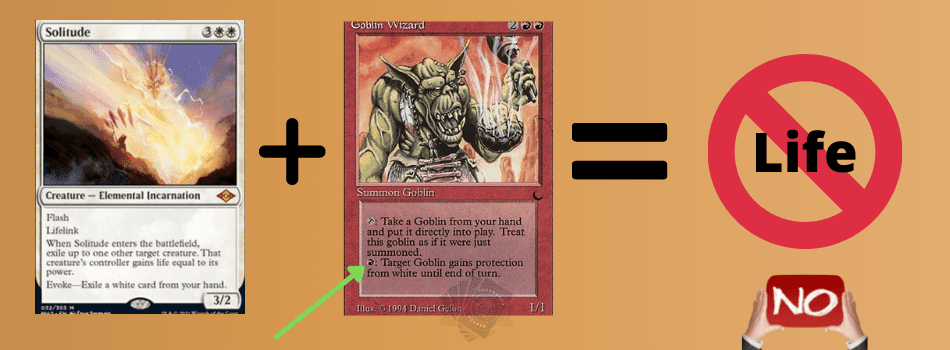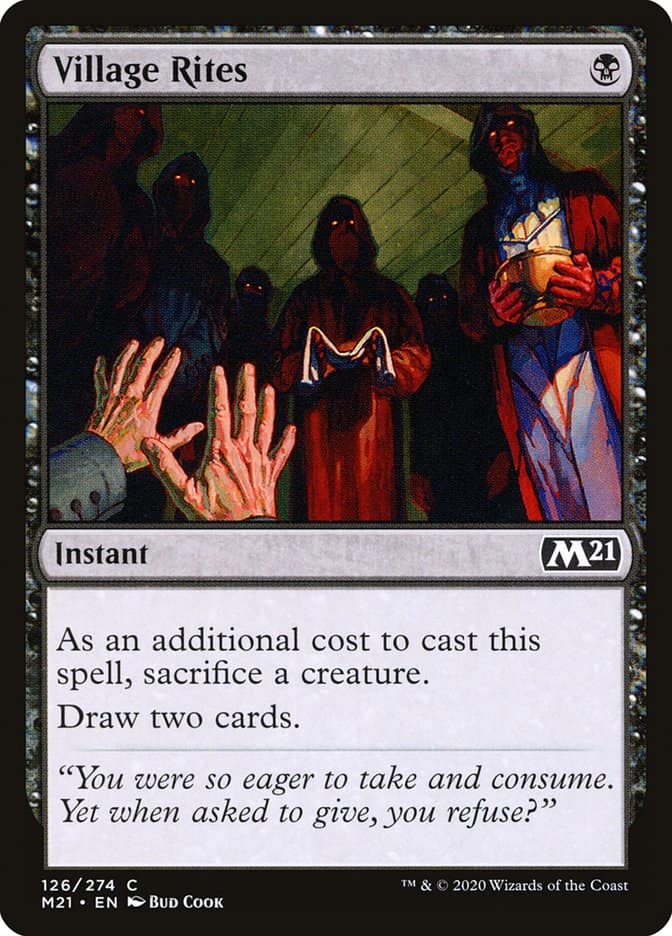Lifelink is an ability that both old and new MTG players love to use. It’s great, and if used correctly, you can gain a substantial amount of life each round. Let’s look at this ability and how it works.
Lifelink is a static evergreen ability that mainly creature cards get in MTG. However, there are instances where you, as a player, can link the ability to yourself. In essence, it says that any source that would deal damage will give life back to its controller equal to the amount of damage dealt.
This article will cover all the rules regarding Lifelink and precisely how it works. Want to know how it works when a creature attacks or blocks? We cover that. What about when multiple creatures attack or if you yourself, as a player, can get Lifelink? We cover it all.
How Does Lifelink Work In Magic The Gathering?
Lifelink is a static ability in MTG that allows a player or rather the controller of a card with Lifelink to gain additional life.
Let’s define Lifelink in a little more detail. When a source with Lifelink causes damage, that source will cause the controller to gain that amount of damage dealt back as life.

For example, Let’s say you had Solitude out on the battlefield, and you attacked with it. The opposing player doesn’t have any card to block, so they take three damage. This is because Solitude is a 3/2 creature. In addition to the three damage they take, you actually gain three life. This will be added to your life total.
For instance, if your life total were 15 after Solitude attacked, it would become 18.
How Much Life Do You Gain With Lifelink?
You will gain life equal to the amount of damage the source deals to either the player or to their creature if they can be blocked.
In the example above, we used a creature attacking a player, and they gained life through that, but the roles could work if the creature that was attacking was blocked.

For example, let’s take Solitude again and say that it attacks. This time the opponent blocks with Pitless Plunderer. In this situation, both cards do not deal enough damage to each other for either of them to die.
However, Solitude will still grant Lifelink, and that player will still get three lives added to their life total when the stack resolves.
How Does Lifelink Work When Blocking?
In the example above, we discussed how a player would still gain life whether their card had attacked a player or another creature. But what happens if a creature with Lifelink blocks a creature that is attacking?
For example, what if Solitude blocked Llanowar Elves. Would the player with Solitude get life back, and would they get life back equal to the Elves toughens?

If a player blocked the Elves with Solitude, not only would the Elves die, but they would not get the damage equal to the Elves’ toughness; they would get life equal to the amount of damage dealt. This is equal to three.
Remember that the rules state that a player with a card with Lifelink will gain life equal to the amount of damage dealt. This is regardless of a creature’s toughness.
Lastly, if you have two creatures, one that is attacking and the other that is blocking, and they both have Lifelink, both players would be rewarded with additional life. This is regardless if any of the cards are destroyed or not.
How Much Life Do You Gain With Blocking?
A card that has Lifelink that is blocking will give its controller life according to how much damage it deals.
In the example above, we illustrated that a creature card that blocks but has higher power than the creature that is attacking’s toughness will still give the amount of damage it deals in the form of life to its controller.
This will go apply to any case where a creature with Lifelink is blocking. No matter the situation (although MTG loves to have exceptions), a blocking creature will give its controller life back total to its damage dealt.
How Do You Stop Lifelink In MTG?
There are a couple of ways to stop Lifelink creatures from sending life back to their controller.
The first, and easiest, is to block with creatures that have First Strike. Creatures with First Strike modify the combat phase and deal damage before anything else.
Typically, creatures will deal damage to each other at the same time, but a creature with First Strike will deal damage first. If that damage is enough to kill the creature that has Lifelink, it will not give its controller any life.
The next way of stopping Lifelink is to block with a creature that has protection from the creature with Lifelink. For example, if Solitude attacks and is blocked by Goblin Wizard and the controller has paid the mana cost for its ability, then nothing will happen to either card.

The next way that is a bit tricky and complicated for new players to understand is by blocking with a creature and then sacrificing it before the card with Lifelink resolves on the stack.
For example, Let’s say Village Rites was in the hand of the controller who is blocking. The card that is attacking has Lifelink and the controller with Village Rites blocks with one of their creatures.

As blockers are assigned, the player with Village Rites casts the card and uses its ability – sacrificing their blocking creature. When everything starts to resolve, the card attacking with Lifelink will essentially be attacking nothing and will deal no damage.
Another way to deal with creatures that have Lifelink is to reduce their toughness to zero. If Solitude attacks and the opponent can’t block, they can cast an instant such as Shock.
Shock will deal two damage to Solitude, and it will die before it gets the chance to deal any damage to the player. Thus, it won’t grant Lifelink.

Lastly, a player can cast any kind of spell or play an ability that prevents combat damage. Remember the rules state that the card with Lifelink has to deal damage. If it does not, then it does not have the Lifelink ability apply.
For example, suppose an opposing player attacks with a creature or many creatures with Lifelink, but you play Hindervines. If none of their creatures had +1/+1 counters, then no damage would have been dealt, and the opposing player would not receive any life that round.
Can You Double Lifelink?
MTG has no such rule or situation that has “double” Lifelink. However, you do get the ability to Extort. This is another ability in MTG.
This ability effectively lets you cast a spell, and if you do, then each opponent losses one life, and you gain life equal to the total.
Hence, if you attack with a creature that has Lifelink and then play an instant that has the Extort ability, you could gain life twice. However, this is not doubling it.
Can You Stack Lifelink?
As the Magic The Gathering rules state, multiple instances of Lifelink from one source are redundant. This means that Lifelink does not stack.
However, if you have multiple instances of the same source dealing damage, then each source would resolve with Lifelink when it deals damage.
For example, if you attacked with two Solitudes, each would have Lifelink. You, the player, would then get 6 life back.
Final Thoughts
Lifelink is another great and unique ability that creature cards have in MTG. When used correctly with combo decks, this ability can quickly stack a player’s life total up to 100, if not more, making it impossible for the opposing player to win.
These cards are found in many starter decks and are a great way to get into MTG as well. No matter if you are a new player or a veteran, Lifelink is an ability you should always consider.

